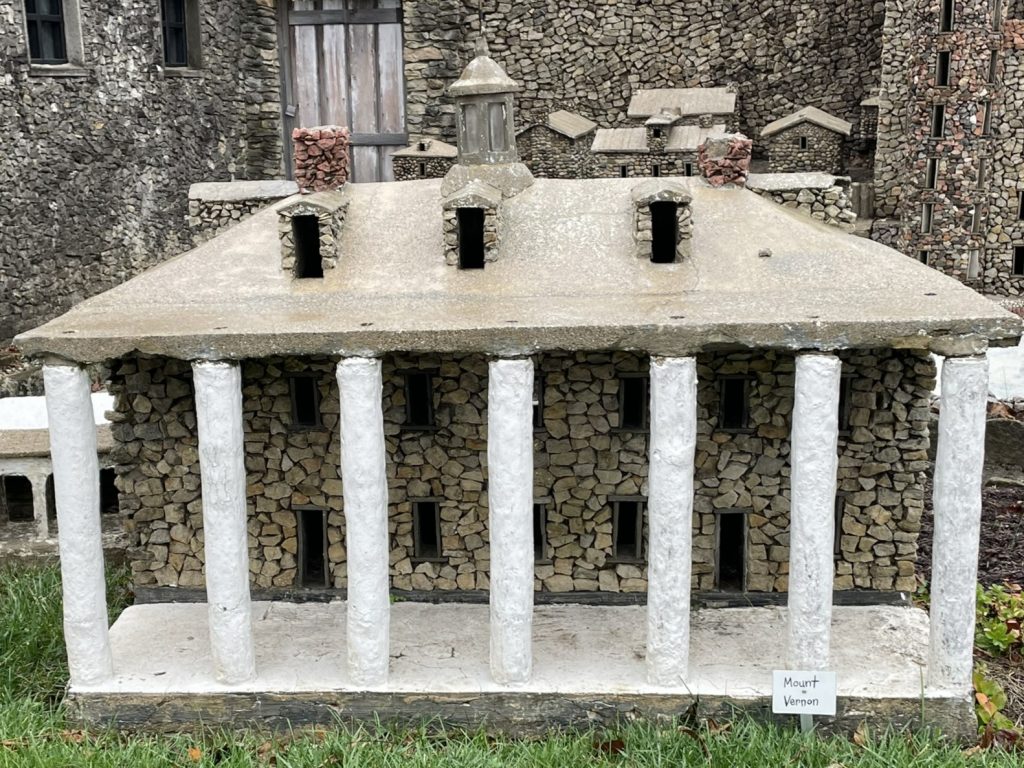The Hartman Rock Garden in Springfield, Ohio almost defies description. It is the work of Ben Hartman (1882-1944), who was laid off during the Great Depression and became very restless. His solution to his malaise was to begin constructing small structures in his yard using “concrete, metal, glass, stone, wood, and whatever else he could find.”
He started by building a fishing pond, and went on from there to eventually constructing “hundreds of structures and figurines for the garden, following the themes of history, religion, patriotism, and popular culture.”
It’s hard not to exclaim as you wander and see the White House over here and Noah’s Ark over there, and oh, there’s Abe Lincoln’s log cabin and tomb. Hartman constructed everything himself by hand, even breaking the stones down to size.
There are more than 100,000 rocks in the Rock Garden, which Hartman obtained from a nearby creek.


Ben completed the bulk of his project by 1935, and died just 9 years later of silicosis, an occupational lung disease. His wife Mary maintaining the Rock Garden for the next 53 years, until she passed herself. In 2008 the Kohler Foundation, which is known for its work with visionary art, purchased and restored the Rock Garden. It’s now open for self-guided tours, under the management of Friends of the Hartman Rock.
It does feel a little bit like walking through the yard of a crazy person, but we like that sort of thing, so we’re not here to judge.












